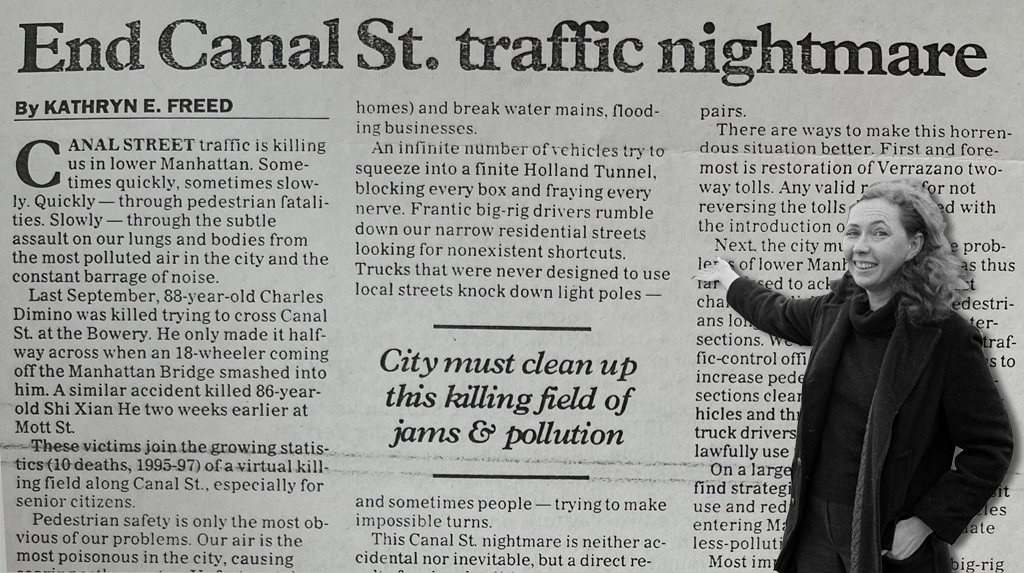
Saturday afternoon traffic congestion on a London street near Covent Garden with dimensions and land use almost identical to Prince Street in Manhattan.
In the days before Wednesday's hearing on pedestrian safety, the City Council should consider how badly New York City pedestrians fare compare to those in London. While pedestrian safety has been improving in both cities these last few years, 4,000 more walkers are struck and injured by motor vehicles in New York City each year compared to its competitor across the Atlantic. Clearly, New York City can be doing more and better to make its streets safer for walking.

If NYC streets were as safe as London's 4,000 fewer pedestrians would be injured by motor vehicles each year.
New York City and London compete for the title of greatest city in the world. The two growing cities are remarkable similar in their density, transit use, ethnic diversity and bustling economies and culture. But when it comes to pedestrian safety, London is clearly winning. When adjusted for population, about 63% more New Yorkers on foot are struck by motor vehicles than their walking brethren in Greater London. Worse yet, while London continues to make great progress reducing pedestrian injuries -- a 9% drop in 2006 -- unreleased NYC police data shows that New York City pedestrian injuries increased in 2006.

Seven Dials near Covent Garden: Pedestrians, motorists and cyclists share public space.
Both New York and London made immense strides improving pedestrian safety over the last 15 years. The incidence of pedestrian injuries in NYC declined by an impressive 44% from 1990 to 2005, from 222 to 124 people struck per 100,000 people per year. London's incidence of pedestrian injuries fell by 53%, from 178 to 84 per 100,000 population during the same period. (In raw numbers, the number of pedestrians struck in NYC fell from 16,288 people to 10,197, compared to a reduction from 12,127 to 6,206 in London).

Neal
Street somehow manages to thrive as one of London's great shopping
destinations without providing on-street parking.
London's success in reducing pedestrian injuries is no surprise. London mayor Ken Livingston is a vocal proponent of reducing car use and encouraging walking and cycling. Livingstone understands that walking is a fundamental part of a "sustainable" city. In contrast, New York City officials speak of "balancing the needs" of motorists and pedestrians. In practice this often means placing traffic flow before the well being of people on foot; something which can be seen from West Houston Street in Manhattan to Grand Army Plaza or Eastern Parkway in Brooklyn.

Trafalgar Square: The pedestrian plaza in the background was once a busy, congested motorway.
Livingstone has made ambitious traffic safety and walking goals central to his sustainability plans. London has an extensive Safe Routes to School program, numerous 20 mph traffic calming zones in residential neighborhoods, an aggressive program to convert prominent places like Trafalgar Square into car-free public space, a new generation of digital speed cameras -- London has 800 speed and red light cameras compared to 100 red light cameras in NYC -- and congestion pricing in the central business district.
The result is a 29% reduction in the incidence of pedestrian injuries in London from 2000 to 2005 compared to a 14% reduction in NYC during the same five-year period. A New York City serious about being a great sustainable city has much to learn from London about better and safer walking.
 Note on sources for this article: NYC pedestrian injury numbers are from the State Department of Motor Vehicles based on reports from the NYPD. These pedestrian injury numbers are conservative. For unknown reasons, internal records kept by the NYPD and NYCDOT show pedestrian injuries occurring 20% to 40% more frequently than NYDMV. For 2006, NYC population is based on US census estimates and NYC pedestrian injuries are conservatively assumed to be the same as 2005. NYSDMV pedestrian injury numbers for 2006 will not be available until Fall 2007. All London data is from Transport for London.
Note on sources for this article: NYC pedestrian injury numbers are from the State Department of Motor Vehicles based on reports from the NYPD. These pedestrian injury numbers are conservative. For unknown reasons, internal records kept by the NYPD and NYCDOT show pedestrian injuries occurring 20% to 40% more frequently than NYDMV. For 2006, NYC population is based on US census estimates and NYC pedestrian injuries are conservatively assumed to be the same as 2005. NYSDMV pedestrian injury numbers for 2006 will not be available until Fall 2007. All London data is from Transport for London.
Photos: Aaron Naparstek, March 2007




